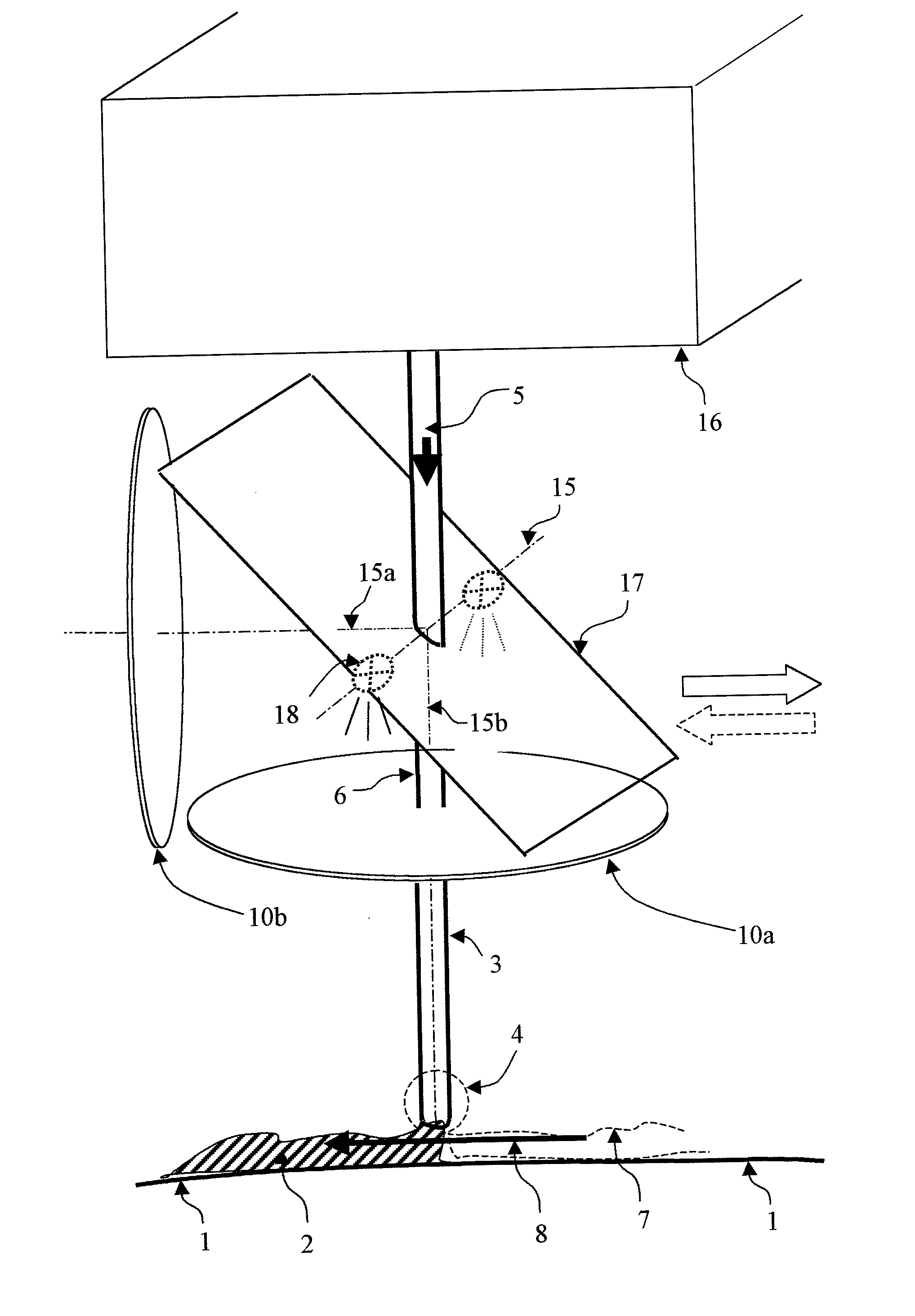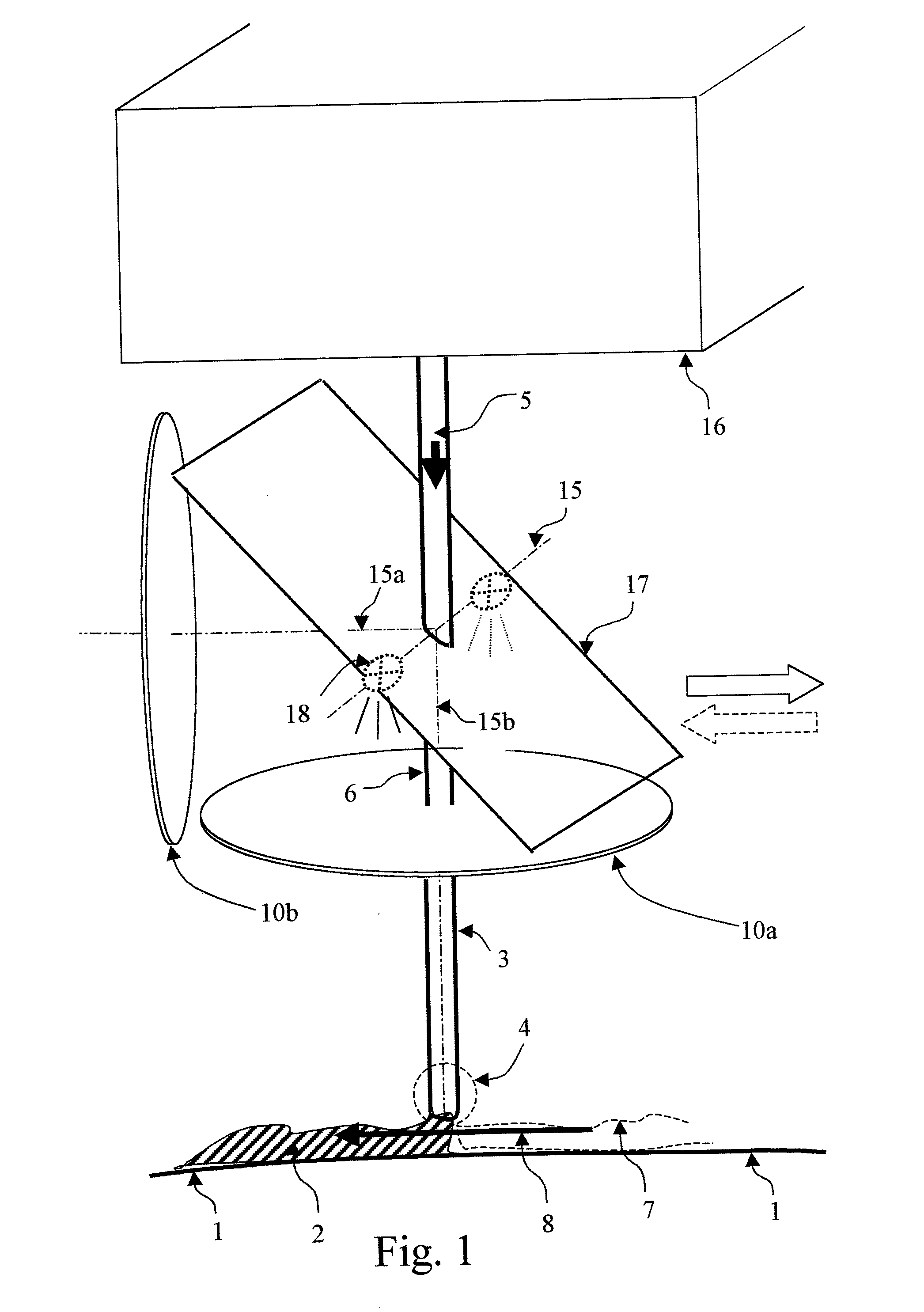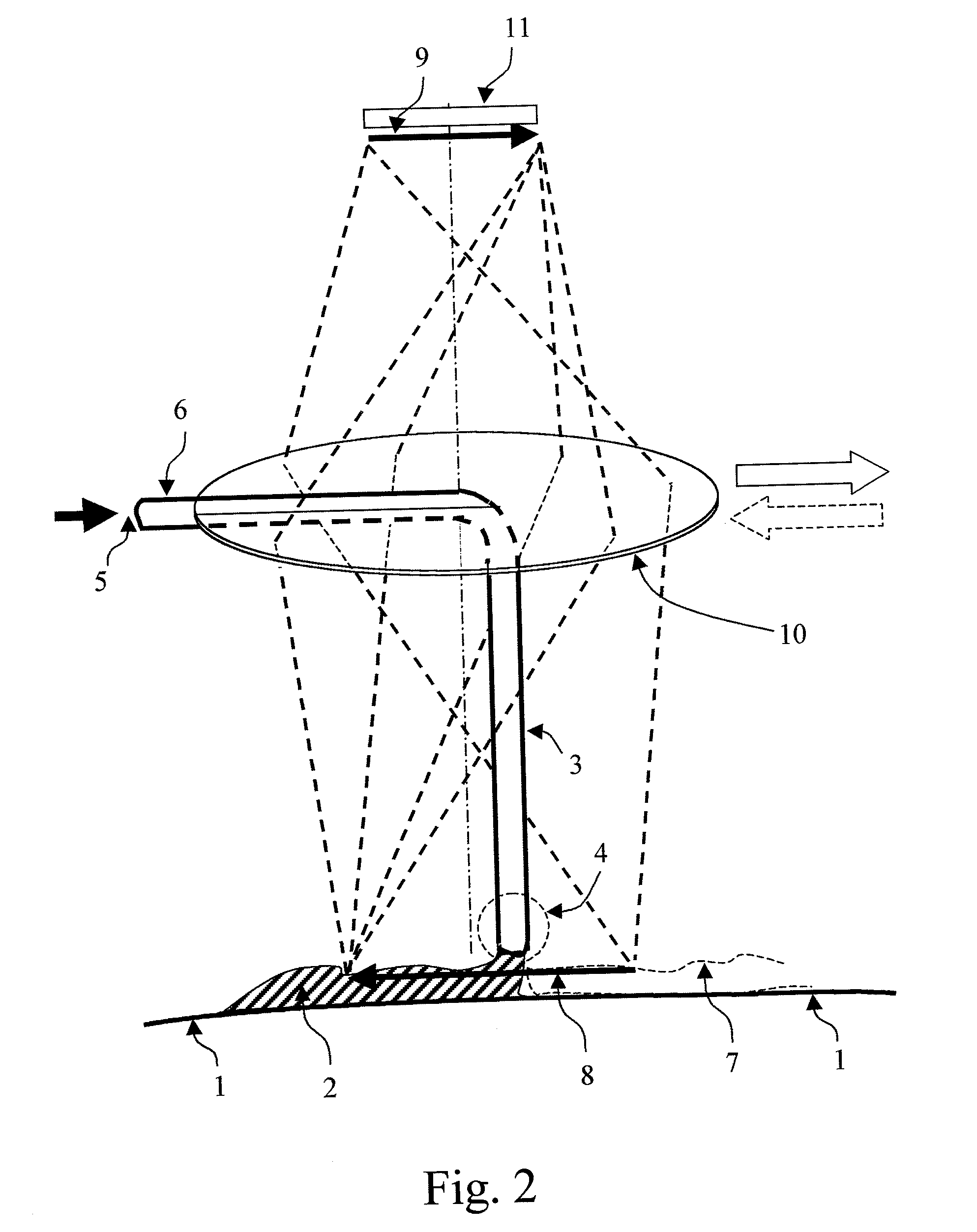Optical Guide and Online Control of a Tool
a tool and optical guide technology, applied in the direction of mechanical control devices, color television, television systems, etc., can solve the problems of requiring a large amount of space transverse to the movement direction, and requiring a large amount of spa
- Summary
- Abstract
- Description
- Claims
- Application Information
AI Technical Summary
Benefits of technology
Problems solved by technology
Method used
Image
Examples
Embodiment Construction
[0023] Referring to the various figures, and, in particular to FIG. 2, for optical control of the work result of a tool 3 and / or for optically guiding the tool 3 via a camera 11 with optics 10, 10a, 10b, wherein the tool is moved relative to a workpiece 1, in particular on a curved path, the tool is placed at least approximately centrically in the image field 8, and its support 6 be located within the beam path either approximately centrically in the beam path, directly in a pupil 15 (FIG. 1) of the optics 10, 10a, 10b, or at least near enough to the pupil of the optics that the support 6 is not visible, or is blurred, such that the working area (image field) 8 around the workpiece is visible for analysis.
[0024] The pupil is the aperture (e.g., aperture stop) of an optical system. In the case of very simple lens systems, the lens itself is the pupil. In more complex systems, e.g., in the known Köhler illumination, the aperture is depicted in real intermediate images. The term pupil...
PUM
| Property | Measurement | Unit |
|---|---|---|
| semi-transparent | aaaaa | aaaaa |
| viscous | aaaaa | aaaaa |
| width | aaaaa | aaaaa |
Abstract
Description
Claims
Application Information
 Login to View More
Login to View More - R&D
- Intellectual Property
- Life Sciences
- Materials
- Tech Scout
- Unparalleled Data Quality
- Higher Quality Content
- 60% Fewer Hallucinations
Browse by: Latest US Patents, China's latest patents, Technical Efficacy Thesaurus, Application Domain, Technology Topic, Popular Technical Reports.
© 2025 PatSnap. All rights reserved.Legal|Privacy policy|Modern Slavery Act Transparency Statement|Sitemap|About US| Contact US: help@patsnap.com



